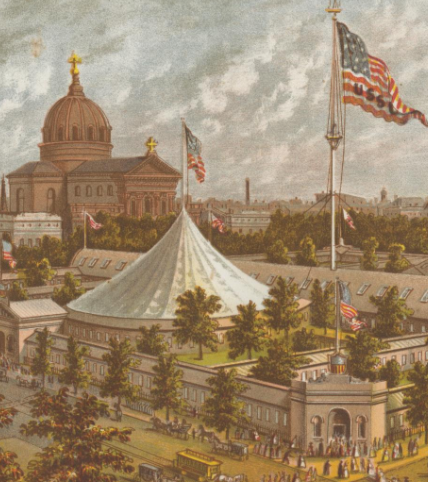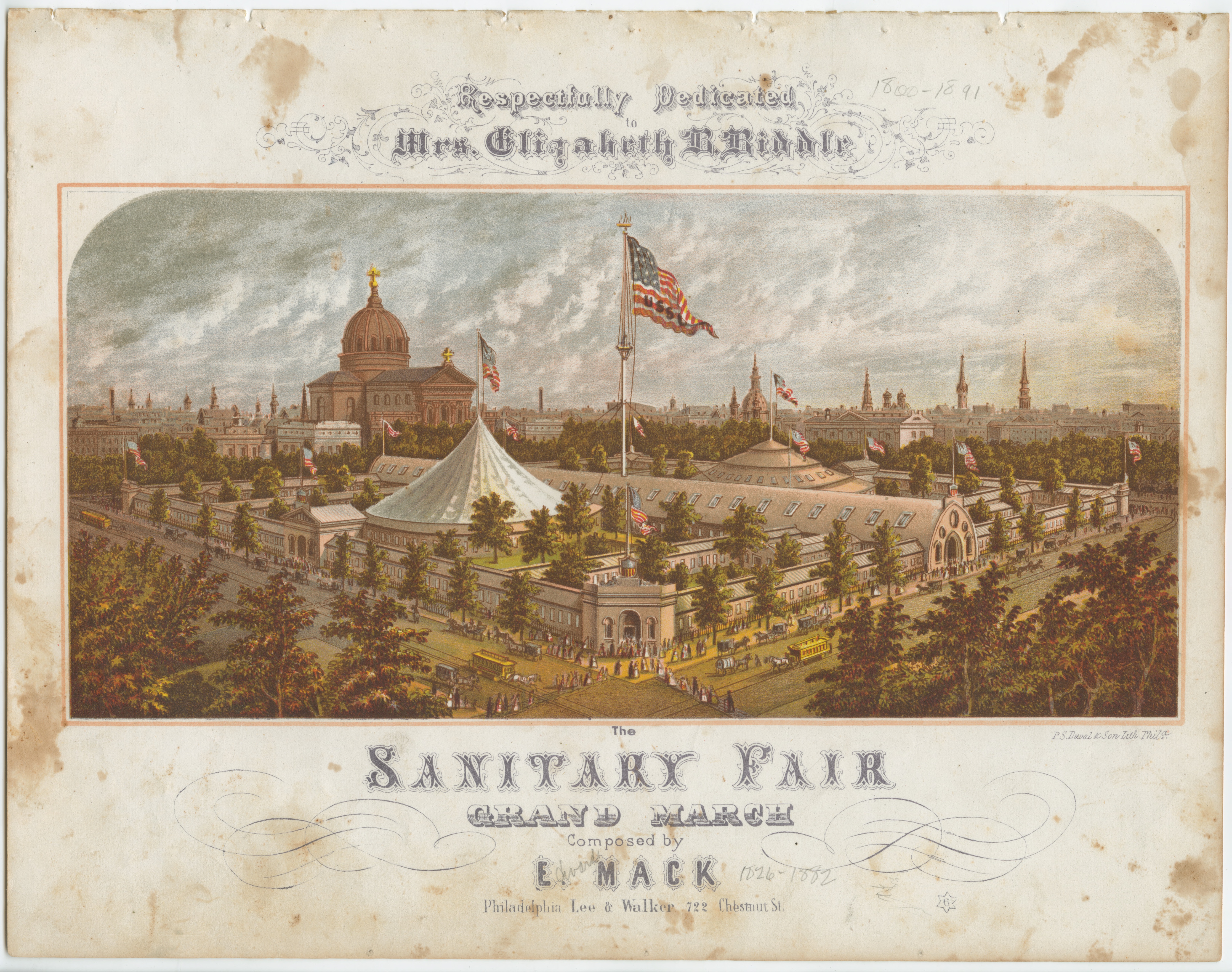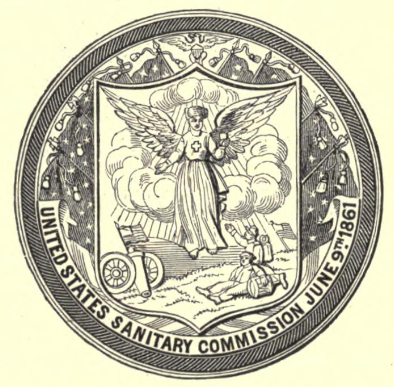
Many disabled Union veterans would not have survived the war without the efforts of the women of the United States Sanitary Commission (USSC). Though Abraham Lincoln signed an order on June 9, 1861, creating the USSC, it was not a regular part of the rapidly expanding federal bureaucracy. The USSC was a non-governmental organization that gave the Union Army and government advice on modern medical practices, inspected military camps to promote hygiene, helped create an ambulance corps and hospital system, and raised money to pay for medical supplies.
The leadership of the Sanitary Commission included prominent men such as Henry Bellows, George Templeton Strong, Frederick Law Olmsted, and Samuel Gridley Howe. Yet much of its most important work was done by women. The very idea of such work originated in April 1861 with the Women's Central Relief Association of New York City, led by physician Elizabeth Blackwell.
Starting in response to the medical disaster of the First Battle of Bull Run, the Sanitary Commission helped make the Union medical effort far more efficient and effective than that of the South. Through the Sanitary Commission, 15,000 women, including author Louisa May Alcott and Hannah Stevenson, volunteered to work, often as nurses, in the nation’s growing system of military hospitals.
Many other women volunteered to organize Sanitary Fairs that raised millions of dollars to care for ill, wounded, and disabled soldiers. The Fairs included entertainments and exhibits. They sold souvenirs and crafts. They took place throughout the North and helped to tie civilian lives of women to the war effort.
The seal of the Sanitary Commission vividly displayed the central role of women in the organization: a nurse, shown as an angel, descends onto a battlefield to rescue injured soldiers. Such images suggest that female care during the Civil War was an important stepping stone for American women toward full political participation. It also suggests, through the meme of Union nurse as mother, that disabled veterans could be seen as childlike, dependent, and incapable of fulfilling the demands of manliness. Disabled Union veterans were sometimes celebrated as heroes, yet sometimes mocked as moochers. Many would struggle with the mixed meanings of disability for the rest of their lives.
See the story of Henry Meacham for analysis of the strategy of the U.S. Sanitary Commission.
See the stories of nurses, Louisa May Alcott and Hannah Stevenson.
Sources:
- Giesberg, Judith Ann. Civil War Sisterhood: The U.S. Sanitary Commission and Women’s Politics in Transition. Boston: Northeastern University Press, 2000.
- Humphreys, Margaret. Marrow of Tragedy: The Health Crisis of the American Civil War. Baltimore: Johns Hopkins University Press, 2013.
- Lee and Walker. “Sanitary Fair Grand March,” pictures the tent and grounds of a large fundraising fair in Philadelphia. (1864). Library of Congress.
- Silber, Nina. Daughters of the Union: Northern Women Fight the Civil War. Cambridge, MA: Harvard University Press, 2005.
- Stille, Charles. History of the United States Sanitary Commission. Philadelphia: J.B. Lippincott & Co., 1866. Internet Archive. The seal of the commission is on the title page.





